Meeting tree kangaroos

Australia is known for its particular set of strange animals. Strange as kangaroos are, everyone in the world knows about them (medium-large animals that travel around our open grasslands using prodigious hops) so they are not surprising. What many people, even some Australians, don't know about is a group of kangaroos that have reverted to the arboreal habitat of their ancient ancestors - tree kangaroos.
Time for a new daypack

I've had my hardworking Deuter Gogo daypack for three years now, and after much use all over Australia, Europe, and New Zealand it’s getting very worn – the main compartment zip has broken and it’s got a few holes in it – so the time has come to replace it. When I’m traveling I use my daypack a lot; I usually have it on every day so to get one that is close to perfect for my purposes is important, and I put some effort into choosing one.
Autumn trees in Orange

We’ve arrived in Central-west New South Wales at the beginning of Autumn. Like much of the temperate and cooler part of Australia there are lots of northern-hemisphere deciduous trees here, and at this time of the year the leaves are starting to change colour and fall. This creates explosions of colour all around the towns' streets. The beautiful trees are promoted as a visitor attraction in many towns, including Orange.
Begonias in Orange

The city of Orange in New South Wales has a lovely formal Victorian-era park, Cook Park.
In 1934 a conservatory was built in the park specifically for showing off begonias. The Blowes Conservatory (named after the mayor of the day, who pushed for its construction) still showcases begonias, so we went along for a look.
Visiting Orange

We’ve recently taken the chance of moving around a bit (just within Australia) by travelling from south-east Queensland to Central-west New South Wales, basing ourselves in the city of Orange. I’ve visited this area a few times in the last few years and have found that it is a place of surprisingly lovely countryside, and functional and community-orientated towns and small cities.
The Archibald Prize in Tweed
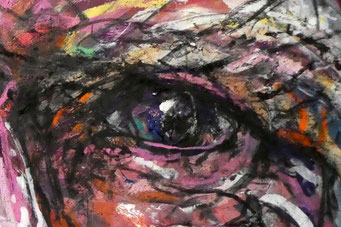
The 2020 Archibald Prize Regional Tour has come to the Tweed Shire in the north-east corner of New South Wales, which is just over the border from where we are on the Gold Coast, Queensland. We’ve crossed paths with the tour a couple of times in the past (Ballarat in 2016, and Orange in 2019) while we’ve been travelling around the country housesitting, and we’ve always enjoyed Australia’s most famous art competition.
Palm Beach debris sculptures

Here on the southern Gold Coast, Queensland, we’ve recently had lots of rain and storms.
This has flushed tonnes of debris out of our local waterway, Currumbin Creek, onto the nearby beach. Most of this debris is wood that ranges in size from small twigs to entire tree trunks. Beach visitors have been having a great time using this as building material for beach sculptures!
A visit to Bribie Island

Bribie Island is a sand-barrier island that runs for over thirty kilometres south from Caloundra, where I’m staying.
The southern end of the island is quite developed, but the northern end near Caloundra is natural and wild, so it’s an attractive place to visit as a contrast with the highly urban development of Caloundra.
Currimundi beach wildlife

I like long walks on beaches, and there’s a long beach that runs north from Moffat Beach on the Caloundra Headland, near to where I’m staying.
Apart from the general beauty of the beach, there’s commonly some interesting and unusual wildlife to be seen here.For this particular walk some small pelagic animals that I rarely, if ever, see had been blown in by the wind.
Mooloolaba

We are staying at the northern end of Alexandra Headland, on the Sunshine Coast in Queensland.
The southern end of Alexandra Headland leads into Mooloolaba Beach and then on to Mooloolaba. Mooloolaba is exclusively a tourist destination, and a popular one. It has numerous restaurants, coffee shops, and tourist trinket shops, with a nicely developed esplanade area.
Staying at Alexandra Headland

We’re on the Sunshine Coast, Queensland, while waiting out the coronavirus restrictions.
Since our initial stay at Kings Beach, Caloundra, we’ve spent the last four months at nearby Alexandra Headland. It’s another nice place to be while we can’t travel.
Kite Surfing at Happy Valley

When the onshore wind picks up Happy Valley at Caloundra become a popular place for kite surfers. Kings beach, where we are staying while we see out the corona virus lockdown, is just around the corner from Happy Valley.
The boardwalk which runs along the shore at Happy Valley is one of our favourite walks, so I usually get to see the kite surfers when they’re in action.
Travelling and the coronavirus
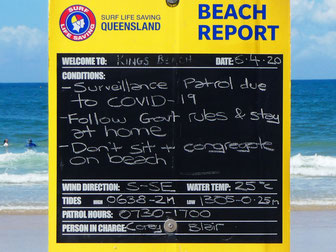
Coronavirus has brought our travelling to a halt!
We have decided to come "home" (whatever that means) to the Sunshine Coast in Queensland until this blows over. We are in Caloundra for a few weeks until we move to a slightly longer-term situation at Alexander Headland, where we will wait to see what happens in the next several months.
Scrounging birds at Tower Hill

Have you ever had sparrows, pigeons, seagulls, or even peafowl scrounging around you and annoying you while you're having a picnic? Here in Australia we have some slightly more disconcerting birds that can take to scrounging for crumbs and scraps. We recently visited Tower Hill (it’s near our Warrnambool housesit) in south-west Victoria for a walk and a picnic, and encountered some scrounging native birds that we don't often see – emus!
Vélez Malaga Carnaval

It’s carnival season around Caleta de Vélez, Spain, where we are house-sitting. I went to the carnival at a nearby town, Vélez Malaga, for the local experience.
The carnival consists of local people dressing up in imaginative and outlandish costumes and dancing in a parade along the streets – it’s a lively and colourful show!
A Canarian diving dog
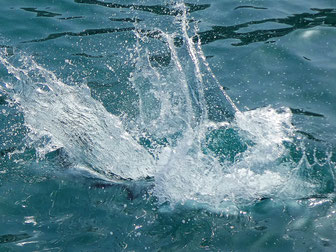
Tenerife, the largest of the Canary Islands, is a major tourist destination for northern Europeans and Spaniards (The Canary Islands are part of Spain).
While most of the tourists head for the south coast, a major secondary concentration is at Puerto de la Cruz, on the north coast.
Our house-sitting pets 2019

Here are our house-sitting pets from 2019!
They are a more conventional bunch this year, with no farm animals – they are virtually entirely dogs and cats, with just one picture there of fish in a tank. Usually I wouldn’t bother adding a picture of fish (the interaction isn’t deep), and there were other fish that I haven’t included, but for our house-sit in London the fish were the only pets that had to look after!
A floppy hat
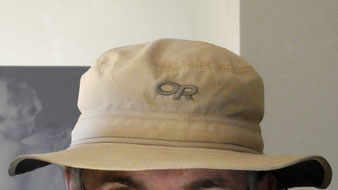
As a sub-tropical Australian, I get nervous if sunlight falls on my eyes or face for any length of time.
Obviously, the best solution for this problem is to wear a hat when I'm out in the sun, and the best sort of hat to travel with is a floppy hat!
Flamenco in Andalucía
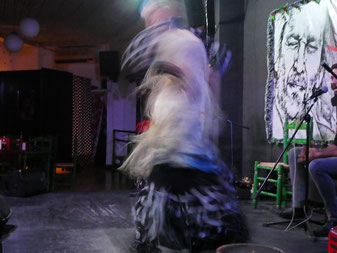
I love watching flamenco performance. While there’s good flamenco at home in Australia, I’m now in the home of flamenco – Andalusia, in southern Spain, so it’s great to get to see it here.
We’ve landed in a good location for flamenco here in Aguadulce – there is an intimate flamenco venue here in the entertainment precinct next to the harbour; it’s called Entre Flamencos del Puerto.
Churros in Spain

Churros are a favourite snack all over Spain. They are so popular that there is a specific type of shop for them: a 'churreria'.
Generally, I'm not big on churros - deep-fried lumps of sweet dough are not my sort of thing, even when they are made in Spain. However, churros are part of Spanish culture, and Lonely Planet particularly recommends Churreria Manolo in the La Chanca barrio of Almería, so we decided to give it a go.
Wintering in Aguadulce

We are currently house-sitting a little apartment and a cat in Aguadulce, in southern Spain. It’s a nice long house-sit (two months) so there's plenty of time to settle in and really get to know the area. Aguadulce is primarily a tourist town that relies on its long and wide beaches and calm clear Mediterranean water to attract vast summer crowds from northern Europe, the United Kingdom, and Russia.
Visiting Como, Italy

We have a couple of spare days between our house sit in Kandersteg in Switzerland and our next housesit in Castronno in northern Italy, so we decided to explore Como on our route, a resort town on the edge of the Italian Alps. The surrounds of Como are known as a playground of the rich and famous; but the old town is a popular destination for ordinary visitors, and a nice northern Italian village with a medieval centre.
A camera disaster!

One of my favourite aspects of travel is photography, and I’ve had a travel-photography disaster!
I was taking photos while waiting for a ferry at the harbour in Torno on Lake Como in Northern Italy, when I slipped on a slimy rock. I came down really hard on my backside – hard enough to jar my teeth! I didn’t drop my camera, but it nevertheless hit the rocks just a bit too hard for some of its more delicate internal mechanism, and now it doesn’t work.
Bushwalking in Como, Italy

We are in Como in northern Italy for a few days between housesits. The people we are next housesitting for in Castronno told us about a great bushwalk in the mountains around Como, so we decided to walk it while we are here.
The walk runs along a high ridge above the shore of Lake Como, with great views of the lake and its surrounding towns.
Flight socks

I’ve recently travelled from Sydney to London, via Tokyo, on an aeroplane. That’s a 10 hour flight and then a 12.5 hour flight, with a one-night stopover in Tokyo to break the long journey.
I was convinced to wear flight socks for the first time, for this journey. That’s because I’m getting older, which is annoying, but a good thing to do, considering the alternatives.
There's more!
Do you want to read more? There's more blog posts on The Journey and the Destination than the ones on this page – all of the blog posts are listed in the archive on the right-hand side of this page (or below on a mobile device) – or you can find them using the menu tabs at the top of the page!
